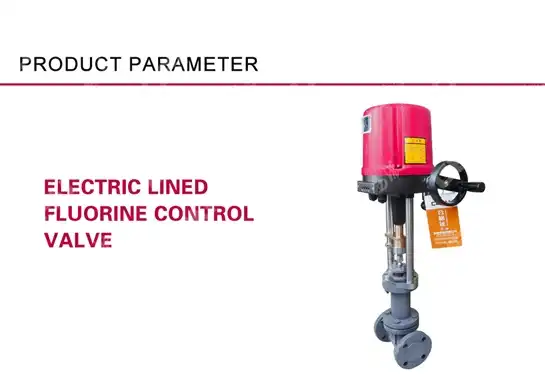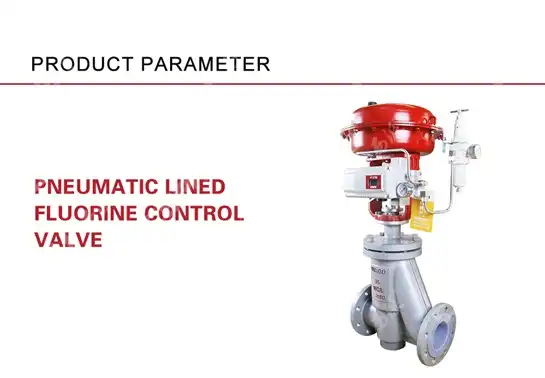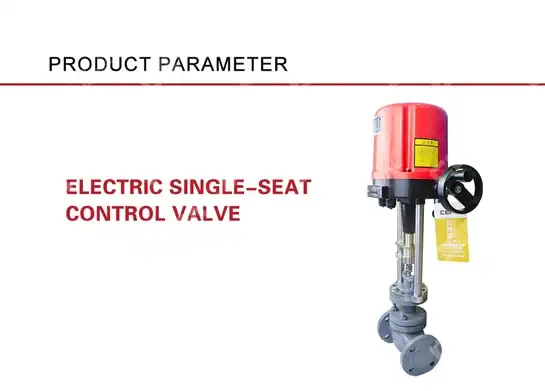How Small High-Temperature Valves Fit Big Applications?
Picture this: A massive petrochemical plant suddenly faces a critical valve failure in its high-temperature processing unit, threatening millions of dollars in production losses and safety concerns. The culprit? An inadequately designed valve that couldn't withstand extreme operating conditions. This scenario plays out across industries worldwide, highlighting a crucial reality: even the smallest High-Temperature Valve components can make or break large-scale industrial operations. In today's demanding industrial landscape, compact high-temperature valves have become the unsung heroes of major applications, delivering exceptional performance where traditional solutions fall short. Understanding how these precision-engineered components integrate into complex systems is essential for engineers, plant managers, and procurement specialists seeking reliable solutions for extreme operating environments.
Understanding High-Temperature Valve Applications in Industrial Settings
-
Critical Role of Compact High-Temperature Valves in Major Industries
High-Temperature Valve technology has revolutionized how industries approach extreme operating conditions, particularly in applications where space constraints meet demanding thermal requirements. These sophisticated components operate effectively in temperatures ranging from 400°C to over 760°C, making them indispensable in petrochemical refineries, power generation facilities, and metallurgical processes. The compact design philosophy behind modern High-Temperature Valve systems addresses a fundamental challenge: delivering maximum performance while minimizing installation footprint and maintenance complexity. In petrochemical applications, small high-temperature valves control critical processes such as coker crude oil bottoms handling, furnace feed systems, and catalyst circulation in fluid catalytic cracking units. These applications demand valves that can withstand not only extreme temperatures but also corrosive media, high pressures, and rapid thermal cycling. The engineering excellence required for these applications extends beyond basic temperature resistance to encompass materials science, precision manufacturing, and advanced sealing technologies. The evolution of High-Temperature Valve design has been driven by industry demands for increased efficiency and reduced maintenance downtime. Modern compact valves incorporate advanced metallurgy, including specialized stainless steel grades like 316, 321, and 347, which maintain structural integrity and sealing performance under extreme thermal stress. These materials, combined with precision machining and advanced heat treatment processes, enable small valves to deliver performance traditionally associated with much larger components.
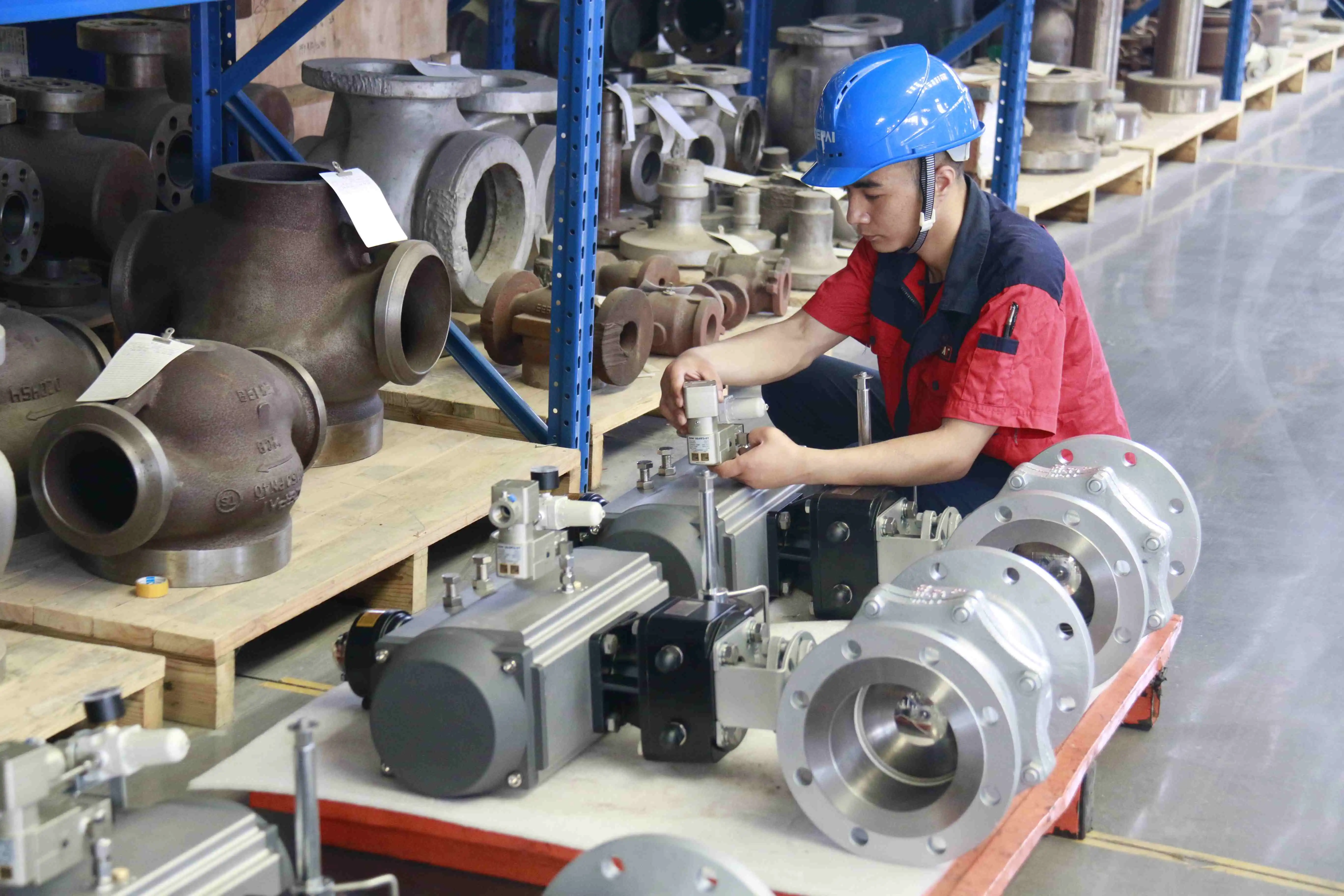
-
Integration Challenges and Solutions in Large-Scale Systems
When integrating High-Temperature Valve components into large industrial systems, engineers face unique challenges that require sophisticated solutions. The primary concern involves thermal expansion management, where small valves must accommodate significant dimensional changes in connected piping systems without compromising sealing integrity. This requires careful consideration of materials compatibility, expansion joint design, and support structure engineering. System integration also demands attention to control response characteristics, where High-Temperature Valve components must deliver precise flow control despite the challenging operating environment. Advanced actuator technologies, including pneumatic, electric, and hydraulic systems, have been specifically adapted for high-temperature applications. These actuators incorporate thermal isolation features, high-temperature lubricants, and specialized sealing systems to maintain reliable operation throughout extended service cycles. The reliability factor becomes paramount in large-scale applications where valve failure can result in catastrophic system shutdown. Modern High-Temperature Valve designs incorporate redundant sealing systems, fail-safe mechanisms, and predictive maintenance capabilities through integrated monitoring systems. These features enable plant operators to maximize uptime while minimizing safety risks associated with extreme temperature operations.
Advanced Materials and Engineering Solutions for Extreme Conditions
-
Metallurgical Excellence in High-Temperature Valve Manufacturing
The foundation of effective High-Temperature Valve performance lies in advanced materials engineering that pushes the boundaries of conventional metallurgy. CEPAI Group's approach to materials selection involves comprehensive analysis of thermal expansion coefficients, corrosion resistance, and mechanical properties under extreme operating conditions. The company's research and development initiatives focus on optimizing alloy compositions specifically for high-temperature applications, ensuring that even compact valve designs can withstand the most demanding industrial environments. Advanced stainless steel formulations, including proprietary alloy modifications, provide superior resistance to thermal cycling fatigue and corrosion-induced degradation. These materials undergo specialized heat treatment processes that optimize grain structure for high-temperature stability while maintaining the mechanical properties necessary for reliable sealing performance. The precision manufacturing capabilities at CEPAI Group's intelligent factory enable the production of High-Temperature Valve components with tolerances measured in micrometers, ensuring consistent performance across all operating conditions. Surface engineering technologies play a crucial role in extending High-Temperature Valve service life in extreme applications. Advanced coating systems, including thermal barrier coatings and specialized surface hardening treatments, provide additional protection against thermal shock, erosion, and chemical attack. These treatments are applied using state-of-the-art processes that ensure uniform coverage and optimal adhesion, resulting in valves that maintain performance characteristics throughout extended service cycles.
-
Innovative Sealing Technologies for Reliable Performance
High-Temperature Valve applications demand sealing solutions that transcend conventional elastomeric systems, requiring metal-to-metal sealing technologies that maintain integrity under extreme thermal stress. The development of these advanced sealing systems involves precise surface finishing, specialized geometry design, and careful materials selection to achieve leak-tight performance without compromising operational flexibility. CEPAI Group's engineering teams have developed proprietary sealing technologies that incorporate fire-safe design principles, ensuring that High-Temperature Valve components maintain their sealing integrity even under emergency conditions. These systems utilize advanced materials such as flexible graphite, expanded PTFE, and specialized metal alloys that retain their sealing properties across wide temperature ranges while providing the durability necessary for long-term service. The manufacturing precision required for effective metal-to-metal sealing systems demands advanced machining capabilities and rigorous quality control processes. CEPAI Group's intelligent manufacturing facility employs computer-controlled precision machining centers that maintain tolerances within 0.001 inches across all sealing surfaces. This level of precision, combined with comprehensive testing protocols, ensures that every High-Temperature Valve meets or exceeds performance specifications for critical applications.
Industry-Specific Applications and Performance Benefits
-
Petrochemical and Refining Applications
In petrochemical and refining operations, High-Temperature Valve components serve as critical control elements in processes that define industry efficiency and safety standards. These applications include fluid catalytic cracking units, where valves must handle temperatures exceeding 760°C while controlling the flow of catalyst particles and hydrocarbon vapors. The compact design of modern high-temperature valves enables their integration into space-constrained process units where traditional large valves would be impractical. Coker unit operations represent another demanding application where High-Temperature Valve technology demonstrates its value in large-scale systems. These processes involve the thermal cracking of heavy petroleum fractions at temperatures approaching 500°C, creating an environment where valve reliability directly impacts production efficiency. CEPAI Group's high-temperature valves incorporate specialized trim designs and advanced materials that resist coking and erosion, ensuring reliable operation throughout extended service cycles. The economic benefits of employing properly engineered High-Temperature Valve systems in petrochemical applications extend beyond initial cost savings to encompass reduced maintenance requirements, extended service intervals, and improved process efficiency. These valves enable plant operators to optimize process conditions for maximum throughput while maintaining the safety margins necessary for reliable operation in hazardous environments.
-
Power Generation and Energy Production
Power generation facilities rely heavily on High-Temperature Valve technology for steam systems, combustion control, and waste heat recovery applications. In these environments, small high-temperature valves control critical processes such as steam bypass, turbine protection, and boiler feedwater systems where failure can result in significant equipment damage and extended outages. The compact design of modern valves enables their integration into control schemes that require rapid response and precise flow control. Combined cycle power plants present unique challenges where High-Temperature Valve components must interface with both gas turbine and steam turbine systems, requiring operation across wide temperature and pressure ranges. CEPAI Group's valve designs incorporate flexible sealing systems and robust actuator interfaces that accommodate the thermal cycling inherent in these applications while maintaining precise control characteristics throughout the operating envelope. The reliability requirements for power generation applications demand High-Temperature Valve designs that incorporate redundant safety features and fail-safe operation modes. Advanced monitoring capabilities, including position feedback, diagnostic systems, and predictive maintenance features, enable plant operators to maximize availability while minimizing unplanned maintenance events that can impact grid stability and revenue generation.
Quality Assurance and Certification Standards
-
Comprehensive Testing Protocols for High-Temperature Applications
The validation of High-Temperature Valve performance requires comprehensive testing protocols that simulate the extreme conditions encountered in actual service applications. CEPAI Group's CNAS-accredited testing laboratory employs advanced test equipment capable of subjecting valves to temperatures exceeding 800°C while maintaining precise control over pressure, flow, and thermal cycling parameters. These testing capabilities ensure that every valve design meets or exceeds the performance requirements specified for critical applications. Thermal cycling tests represent a crucial aspect of High-Temperature Valve validation, where components undergo repeated heating and cooling cycles that simulate years of actual service conditions. These tests evaluate not only the valve's ability to maintain sealing integrity but also its mechanical performance under the stresses induced by thermal expansion and contraction. The data generated through these tests enables engineers to optimize valve designs for maximum service life and reliability. Fire safety testing constitutes another critical validation requirement for High-Temperature Valve applications in hazardous environments. CEPAI Group's testing protocols comply with international standards including API 607 and ISO 10497, ensuring that valves maintain their structural integrity and sealing performance even when exposed to external fire conditions. This testing validates the fire-safe design principles incorporated into valve construction and provides the documentation necessary for regulatory compliance.
-
International Certification and Quality Standards
CEPAI Group's commitment to quality excellence is demonstrated through comprehensive certification programs that validate both manufacturing processes and product performance. The company maintains ISO 9001 quality management systems that govern all aspects of High-Temperature Valve production, from initial design through final testing and delivery. These systems ensure consistent quality and performance across all product lines while providing the traceability necessary for critical applications. API certification represents a crucial requirement for High-Temperature Valve applications in oil and gas industries, where CEPAI Group maintains active certifications including API 6A, API 6D, and API 602. These certifications validate the company's ability to manufacture valves that meet the stringent requirements for wellhead, pipeline, and refinery applications where failure can have catastrophic consequences. The company's commitment to continuous improvement extends beyond basic certification requirements to encompass advanced quality initiatives such as Six Sigma methodologies and statistical process control. These programs ensure that High-Temperature Valve manufacturing processes deliver consistent performance while identifying opportunities for further optimization and cost reduction without compromising quality or reliability.
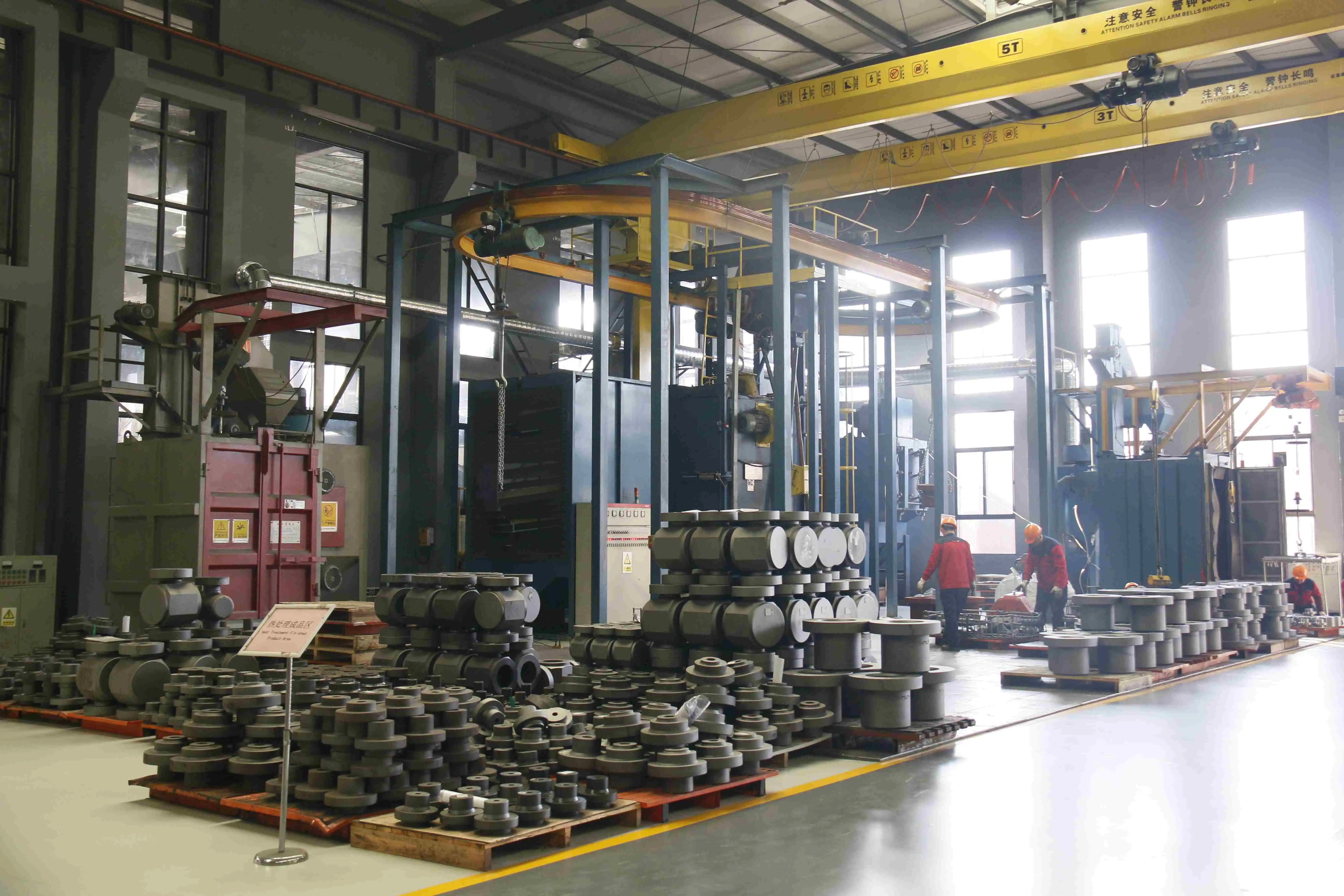
Innovation and Future Developments in High-Temperature Valve Technology
-
Smart Valve Technologies and Digital Integration
The evolution of High-Temperature Valve technology increasingly incorporates digital technologies that enable advanced monitoring, control, and predictive maintenance capabilities. CEPAI Group's investment in Industry 4.0 technologies has resulted in the development of smart valve systems that provide real-time performance data, enabling operators to optimize process conditions and anticipate maintenance requirements before failures occur. Integrated sensor technologies enable High-Temperature Valve systems to monitor critical parameters such as stem position, sealing force, and internal temperature distribution. This data streams to central control systems that can analyze trends, identify developing problems, and automatically adjust operating parameters to maintain optimal performance. The integration of artificial intelligence algorithms enables these systems to learn from operating history and continuously optimize their performance characteristics. Remote monitoring capabilities represent another significant advancement in High-Temperature Valve technology, where CEPAI Group's AR-enabled service systems provide real-time technical support and maintenance guidance to plant operators worldwide. This technology reduces downtime, improves maintenance quality, and enables the sharing of expertise across global operations, resulting in improved reliability and reduced operating costs for customers.
-
Sustainable Manufacturing and Environmental Considerations
CEPAI Group's commitment to environmental responsibility extends throughout the High-Temperature Valve manufacturing process, incorporating sustainable practices that minimize environmental impact while maintaining the highest quality standards. The company's intelligent manufacturing facility employs energy-efficient processes, waste reduction programs, and environmentally responsible materials sourcing that align with global sustainability initiatives. Advanced manufacturing technologies, including additive manufacturing and precision machining, enable the production of High-Temperature Valve components with minimal material waste and reduced energy consumption. These technologies also enable the creation of complex internal geometries that optimize flow characteristics while reducing pressure drop and energy consumption in end-use applications. The development of recyclable valve designs represents another aspect of CEPAI Group's environmental commitment, where High-Temperature Valve components are engineered for easy disassembly and materials recovery at the end of their service life. This approach supports circular economy principles while reducing the environmental impact of valve replacement and disposal activities.
Conclusion
Small High-Temperature Valves prove their critical importance in large-scale industrial applications through superior performance, compact design, and advanced materials engineering. These precision components enable efficient operation in extreme environments while delivering the reliability essential for continuous industrial processes.
Cooperate with CEPAI Group Co., LTD.
When seeking a trusted China High-Temperature Valve manufacturer, CEPAI Group Co., LTD. stands as your premier partner for exceptional quality and innovative solutions. As a leading China High-Temperature Valve supplier with over 15 years of manufacturing excellence, we offer comprehensive High-Temperature Valve for sale backed by rigorous quality standards and competitive High-Temperature Valve price. Our China High-Temperature Valve factory delivers High Quality High-Temperature Valve systems through advanced intelligent manufacturing, extensive certifications including API, ISO, and CE standards, and dedicated technical support. Experience the CEPAI advantage as your reliable China High-Temperature Valve wholesale partner - contact us at cepai@cepai.com for customized solutions that exceed your expectations and drive industrial success.
References
1. "High Temperature Valve Design and Application Guidelines" by American Petroleum Institute Standards Committee, API Publication 623
2. "Materials Selection for High Temperature Valve Applications in Petrochemical Processing" by Dr. Robert Chen, Journal of Industrial Valve Technology, Volume 45
3. "Advanced Sealing Technologies for Extreme Temperature Service" by Engineering Materials Research Institute, International Valve Manufacturing Association
4. "Fire Safe Design Principles for High Temperature Industrial Valves" by Professor Margaret Stevens, Mechanical Engineering Design Standards Publication Series
_1745994790767.webp)
Get professional pre-sales technical consultation and valve selection services, customized solution services.
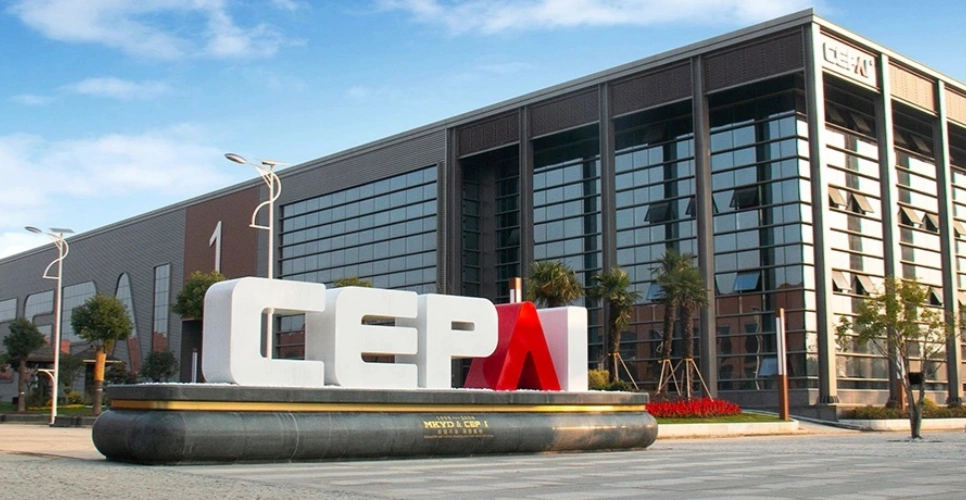
About CEPAI
